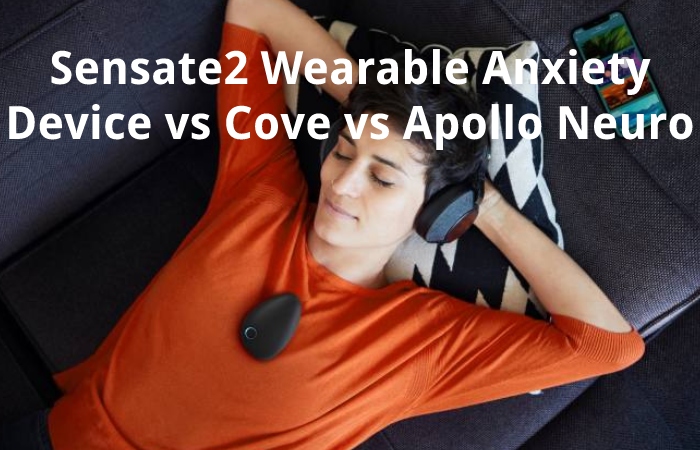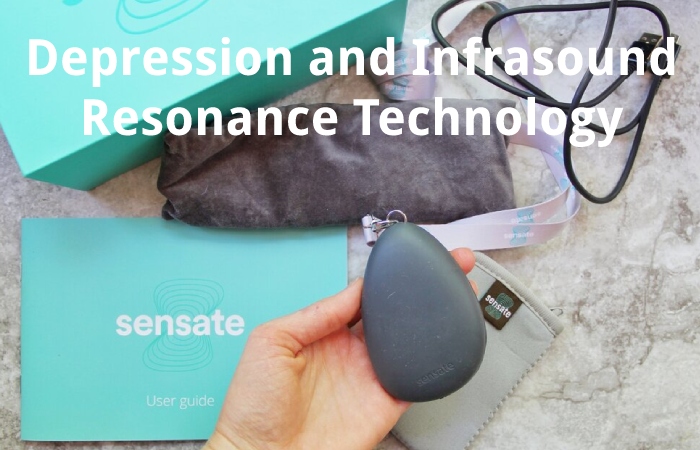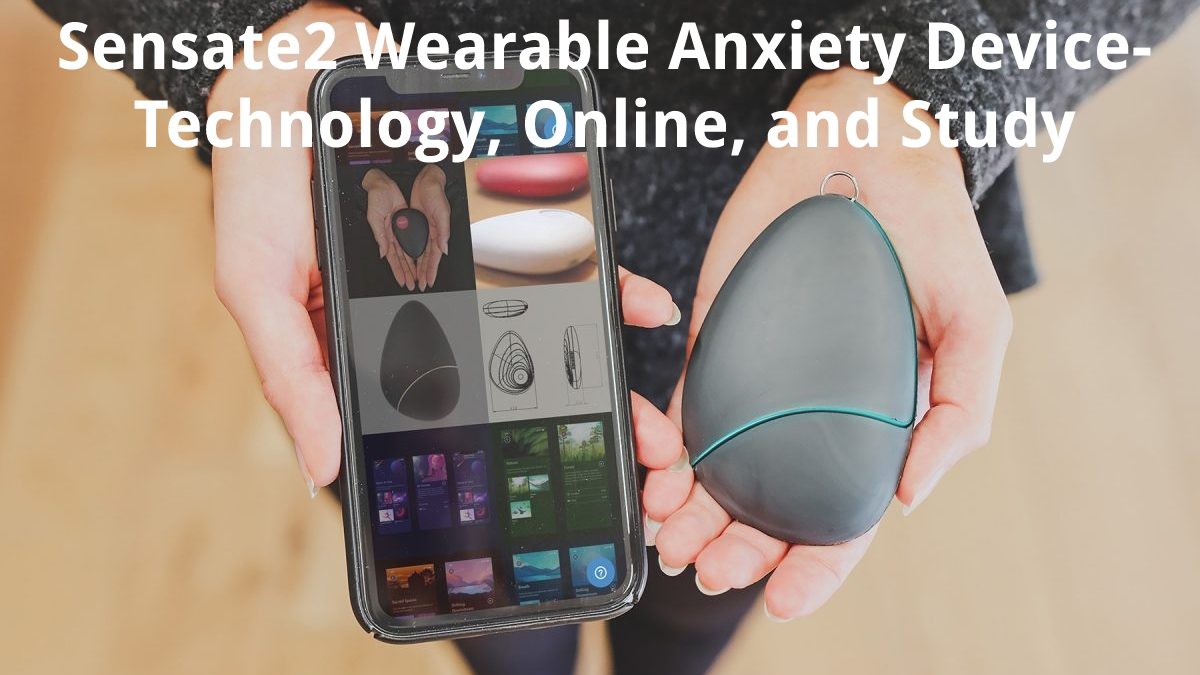Table of Contents
Sensate2 Wearable Anxiety Device
Sensate2 wearable anxiety device is a palm-sized, pebble-like device that sits on the chest and syncs with a free mobile app. It aims to help users recover mental well-being and build pressure resiliency with a 10-minute daily session. It is intended to use low-frequency infrasound to regulate the nervous system and tone the vague nerve, which is responsible for calming the body after periods of stress and anxiety. For example, it can relax the “fight, flight, freeze” spare response, bringing the body back into balance. The new Infrasound Timbre Engine technology inside Sensate II was built to fast-track relaxation and series as a shortcut to calm.
Who is Sensate a Good Fit For?
Sensate is an excellent fit for anybody who has a lot of pressure and anxiety in their lives. But a subset of people inside this group may advantage the most from Sensate: persons who would like to meditate but slurp at it. Or, as I like to call them, persons like me.
Meditation is excellent: It has a lot of aids for the mind and the spirit. We all distinguish people who meditate, and quite often, we are envious of their calm, Zen-like state.
But the problem is that meditation is complex, especially for people already naiant in anxiety. It’s not easy to sit still and reduce when you’re feeling harassed and your mind is competing. Meditation takes a lot of practice and punishment. While Senate won’t instantly turn you into the reincarnation of Buddha, it can help you on your way to calm your mind.
While the Senate is beneficial for those who need some help meditating, the device could also help others. For example, Biohackers, who use technology or other scientific methods to improve their body functions, can benefit from a device that tones vague courage. Additionally, some athletes could benefit from stress discounts, particularly the HRV benefits.
Sensate2 Wearable Anxiety Device vs Cove vs Apollo Neuro

Of course, the Senate isn’t the only option on the market. A few other similar devices promise to help with stress relief and organization. Two of the best recognized are Cove and Apollo Neuro.
While these devices offer similar aids, there are some notable differences. First, the Senate comes in at a lower price. Second, the Cove is damaged on the back of the neck, while the Apollo is strapped to the head. Finally, for some users, the Senate will be the most comfortable option because it just sits on the chest.
Is Sensate2 Wearable Anxiety Device Worth It?
If you’re somebody affected by stress and anxiety, a product that helps address these issues could be worth exploring.
The Senate isn’t cheap but more affordable than some of its replacements. The discipline checks out, and the product is well-liked by its public users.
Let’s explore a few of the aces and cons of the practical.
PROS:
- Sensate was designed as a consumer creation, which means you don’t need medicine to access it.
- Sensate is very harmless and non-invasive, using only broad-spectrum sound deprived of electrical or magnetic stimulation.
- The experience is delightful, produces a profound state of deep relaxation and is recognized by the nervous system as the resonance of a safe signal to relax.
- Easy to use.
- It looks and feels like a robust, premium product.
- Solid battery life of about one week per full charge.
- The device is small and moveable so that you can take it with you anywhere you want to go.
- Unlike its competitors, the Sensate functions on your chest.
- Cheaper than the Cove and Apollo Neuro.
- It’s an alternative for somebody who has a lot of stress and nervousness but doesn’t want to take medication to treat it.
CONS:
- It uses Micro-USB charging, which textures a bit too slow these days. Maybe I’m a spoiled tech nerd, but I think USB-C is the standard across high-quality crops. I’d like to see Sensate recover this in the future.
- The app is pretty basic.
- I’d like to see a more wide library of sounds.
- While it is more affordable than its contestants, $249 is still a steep price.
What are Additional Customers on Reddit and Online Proverb?
The Senate has been around for a while, but it’s built up a crucial spectators base in that time. Most customer reviews of the creation are positive, but it wouldn’t be a tech product if there weren’t some negative reviews, too.
The negative Sensate reviews typically talk about the procedure just not working for them. It’s threatening to say whether that’s on them or the Senate, but it’s worth noting. Some other bad reviewers say it costs too much and cite some tech issues.
Is the study the Science Behind Sensate2 Wearable Anxiety Device Legit?
The Sensate creator, Stefan Chemin, has about 30 years of scientific experience in London’s admired Harley Road Clinic. He conceived his original infrasound resonance technology to help people by targeting the nervous system, particularly the vague nerve.
This cranial nerve, referred to by Sensate as the “gut-brain superhighway”, is how the significant organs communicate.
Sensate states that the vague nerve is accountable for our nervous system response, which plays a pivotal role in digestion, breathing, and heart rate. Fundamentally, this nerve is responsible for the fight-or-flight nervous system and our “rest and digest” state.
The idea here is to train our bodies to spend more time in the “rest and abridgement” stage because it helps our bodies heal. Too much time in fight or aeronautical mode is detrimental to our health.
Sensates says that they can tone the vague nerve with three natural mechanisms.
Infrasonic resonance: The Sensate uses bone transmission (via the breastbone) to sign the vagus nerve to relax
Soundscapes: The app provides soundscapes that use incidences that lead to the reduction of the mind
Comforting hum: The Sensate delivers a soothing hum that taps into “ancient instincts of safety and relaxation.”
Let’s explore each of the Sensate claims.
The Link between Relaxation and Infrasound Timbre Technology
Promising research shows that using soundscapes can help trigger the parasympathetic anxious system (PNS). PNS start can lower our heart rate and sluggish our living. This study used skin conductance levels (SCL) to show when the parasympathetic nervous system activate. In contrast, heart rate (HR) and heart rate variability (HRV) use to amount to sympathetic activation. The study originated that while heart rate and heart rate variability showed no significant changes when exposed to aural journeys, skin conductance levels changed significantly.
Depression and Infrasound Resonance Technology

A low HRV has been related to depression and poor stress organization. Clinical unhappiness has increased the chance of mortality in an affected role that has recently experienced a myocardial infarction. Reduced heart rate erraticism (HRV) has been suggested to explain this correlation between the two. This study aimed to determine if unhappiness is associated with reduced HRV in patients with a recent MI. 424 MI patients without MI employ and went through 24-hour electrocardiographic monitoring, which determine that HRV levels were significantly lower in patients with depression than in those deprived of depression.
Better Stress Management
Low HRV has been related to increase cumulative stress from chronic and life events. One hundred fifty-seven people participated in a Cumulative Stress/Adversity Interview which consisted of a 140-item question air measuring their cumulative adversity from significant life events, life trauma, recent life events, and chronic stressors. In addition, the participants underwent 24-hour ambulatory ECG monitoring. The study found cumulative and chronic stress associated with decreased cardiac autonomic function.
Improved Blood Pressure
Dysautonomia, a fault of the Autonomic Nervous System (ANS), links to several health conditions, including high blood pressure. Stimulating the vague nerve promotes cardiac relaxation, resulting in lower blood pressure.
- Improved HRV (heart rate variability)
- Whoop and Our Ring users rejoice!
Research suggests that music therapy can help people improve heart rate variability (HRV).
This single-person study followed a healthy person through 10 music therapy sessions starting with resonance frequency breathing or a controlled breathing method. This study found that the music therapy sessions that began with RFB were sessions where more negative emotions express, improving the test subject’s HRV.
Conclusion
Are you one who can fall asleep at the drop of a hat? Can you slot in a power nap whenever you feel like it? Until a few workweeks ago, I’d have said we could never be friends. I am a chronically trouble sleeper and since my teens, I tire of everything from CBD sleep drops to magnesium baths, melatonin and even prescription medication. As a result, I hated (envied) power nappers with a passion. Now though, I’m joining the club thanks to a brilliant new gadget called the ‘power nap pebble’. The Senate is a cordless wearable that emits a low sound vibration, like a sonic toothbrush or a sub-woofer.

